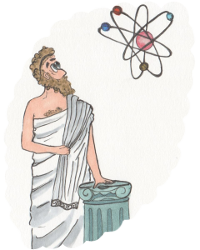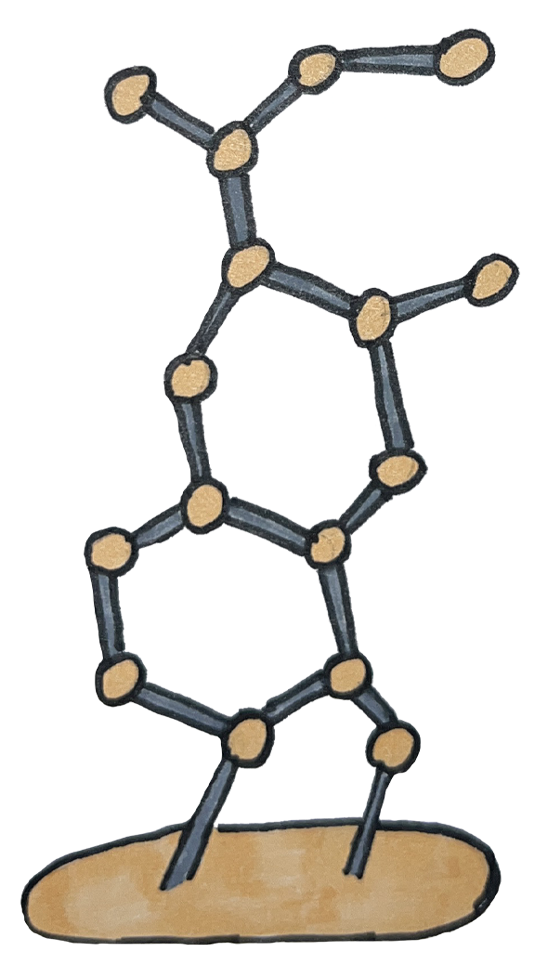Substance
Substance is one of the forms of matter consisting of particles having their own mass. Such particles can be, for example, atoms or molecules.
Pure substances consist of identical molecules, for example: oxygen or iron oxide. Pure substances are obtained in laboratories, and in life you have to deal with mixtures from which pure substances can be isolated. Mixtures, like everything in nature, can be homogeneous (Greek. homos - the same) or heterogeneous (Greek. heteros - different). Homogeneous mixtures are continuous, that is, only the specified molecules are present in such a mixture, for example, brewed tea with dissolved sugar is a homogeneous mixture, and dry tea mixed with sugar is a heterogeneous mixture, here there is a phase separation between the molecules of substances (sugar and tea) - air.
Simple and complex substances
Simple substances they consist of an atom of one element, and complex substances - of two or more. For example, O2 - oxygen is a simple substance, and water, H2O is a complex one.
Chemistry - the science of substances
Chemistry is the science of substances and their properties. Any body consists of a substance: a nail made of iron, gunpowder made of sulfur etc. Also, the body can consist of several substances, for example, a computer consists of iron, gold, copper and others substances.
Molecule

A molecule is the smallest particle of a substance with all its chemical properties. The molecules consist of from atoms - smaller elements, a molecule can consist of one or more atoms.
Assumptions about the presence of atoms arose from ancient Greek philosophers, but the model closest to reality It was proposed only in 1911 by Rutherford. Such a model was called the "Planetary Model", in the center of the atom the nucleus was located, around which the electrons revolved. Everything would be fine, but if you imagine that the charge of an electron allows it (the electron) to rotate around the atom, then over time this charge should be depleted (energy release) and all the electrons should "fall" on the nucleus.
Bohr's planetary model
To explain this effect, Niels Bohr in 1913 introduced the assumption that the electron moves only along a stationary it releases energy only when it moves from one orbit to another. Such an assumption it allowed us to obtain the radii of the orbits of electrons and the amount of energy possessed by an electron in each orbit.
The structure of the atom
An atom consists of a nucleus and electrons, while the nucleus is positively charged, and the electrons (e-) are negatively charged.
So, the atom has no charge,
 because the positive charge of the nucleus is compensated by the negative charge
electrons. Subsequently, scientists discovered that there are different elements having the same amount
electrons, but different masses - this prompted the idea that the nucleus also consists of something.
The nucleus consists of protons and neutrons, protons have a positive charge, and neutrons have zero. So, for example,
Chlorine (Cl - the 17th element of the periodic table of elements) contains 17 protons and 17 electrons. For everyone
the number of protons of a chemical element is fixed, and the number of neutrons can vary, elements
with the same number of protons and different numbers of neutrons are called isotopes.
because the positive charge of the nucleus is compensated by the negative charge
electrons. Subsequently, scientists discovered that there are different elements having the same amount
electrons, but different masses - this prompted the idea that the nucleus also consists of something.
The nucleus consists of protons and neutrons, protons have a positive charge, and neutrons have zero. So, for example,
Chlorine (Cl - the 17th element of the periodic table of elements) contains 17 protons and 17 electrons. For everyone
the number of protons of a chemical element is fixed, and the number of neutrons can vary, elements
with the same number of protons and different numbers of neutrons are called isotopes.
Electronic cloud
In general, the position of the electron has not yet been fixed, so they talk about the probability of finding an electron in a certain area, such an area is called an electronic cloud. Mathematically, the electronic cloud is described by complex differential equations and it doesn't make much sense for us yet.
Figuratively speaking, an electron can be both a meter and a kilometer from its nucleus, but most likely it will be to be in a certain space near the nucleus, what does the electron cloud look like and how are the electrons distributed around read the kernels in the following article "Electronic configuration of the atom".


